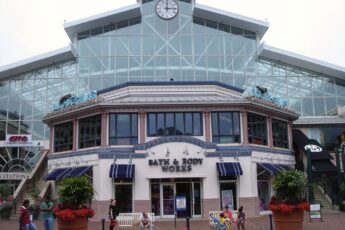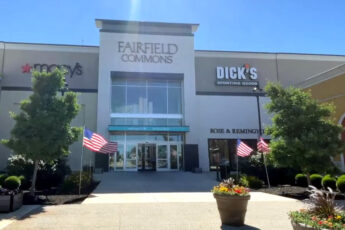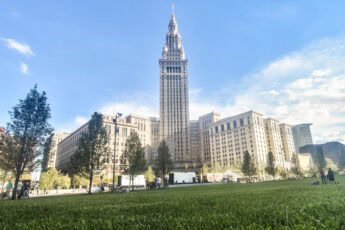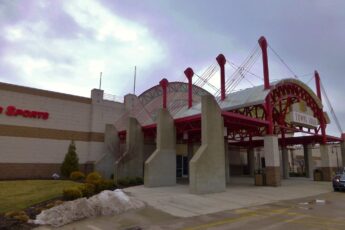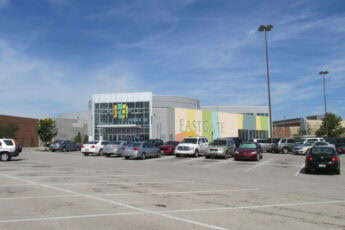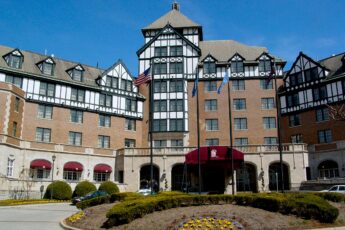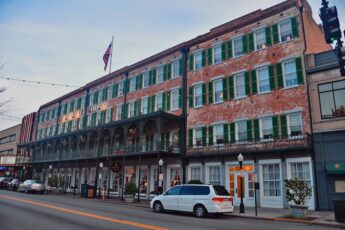A Stroll Through History
The Arcade in Cleveland, built in 1890 with a construction cost of $875,000, remains a significant architectural structure. It has a long history aligns with the development and changes in Cleveland over the years. Often referred to as "Cleveland's Crystal Palace," it is the first building in the city to be listed on the National Register of Historic Places.
The Arcade was inspired by The Galleria Vittorio Emanuele II in Milan, Italy. Its Romanesque Revival architectural style was groundbreaking at the time, and it quickly became a symbol of the city's ambition and prosperity. The Arcade was more than a shopping center; it was a social hub where people from all walks of life could gather, shop, and socialize.
Significant dates pepper its timeline like stars in a clear night sky. In 1973, the building earned a spot on the National Register of Historic Places and received the status of a National Historic Landmark in 1975. These awards aren't just for show; they are a testament to The Arcade's enduring significance in American architectural history.
The Architecture and Design
The Arcade in Cleveland is a feast for the eyes, with its intricate ironwork, expansive glass skylight, and ornate detailing. The building's design is a harmonious blend of form and function, a tribute to the ingenuity of its architects, John Eisenmann and George H. Smith. The five-story Arcade is enclosed with a glass skylight that spans over 300 feet, a revolutionary feature at the time.
1939, a significant remodeling occurred, particularly affecting the Euclid Avenue entrance. However, the essence of the original design was preserved, maintaining the architectural integrity that makes The Arcade a beloved landmark.
The spatial layout of the building is exciting, given the unique angles and levels created by the non-parallel nature of Euclid and Superior avenues.
The building has undergone several renovations, but each has been done with the utmost respect for its original design. The aim has always been to modernize the facilities without compromising their historical and architectural significance. The result is a timeless and contemporary space, a rare feat in today's rapidly changing landscape.
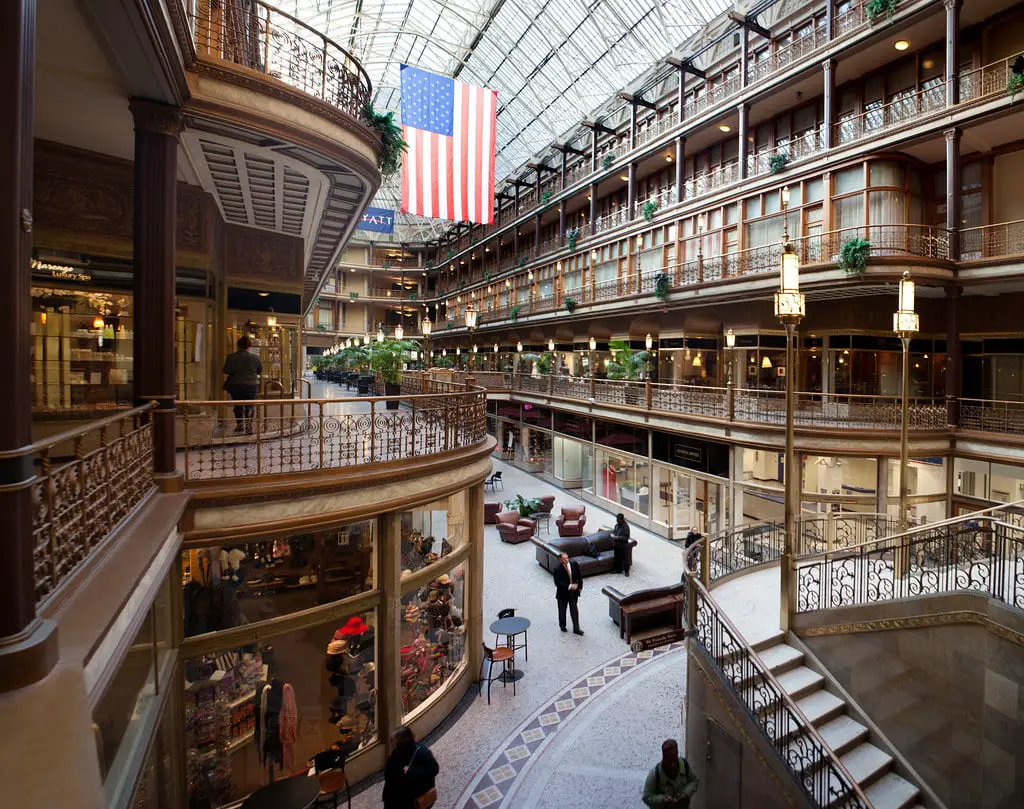
The Arcade in Cleveland Today
Fast forward to 2023, and The Arcade in Cleveland is still a bustling hub of activity. Retail shops like Marengo Luxury Spa and Prosperity Glass offer a diverse shopping experience, while dining options range from the casual Pizza 216 to the more upscale 1890 Restaurant.
The two towers and the upper three levels of the atrium are home to the Hyatt Regency Hotel, enhancing the building's multi-functional use.
For those who prefer a more artisanal experience, Next Level Barbershop and Essential Wellness provide specialized services that cater to a discerning clientele. And let's not forget the United States Post Office and The Arcade Art Gallery, which add to the eclectic mix of tenants.
The Arcade is not just a place to shop or dine; it's a community space that invites people to linger, explore, and enjoy. It's a testament to the vision of its current owners and managers, who have succeeded in creating a vibrant, inclusive environment without sacrificing the building's historic charm.
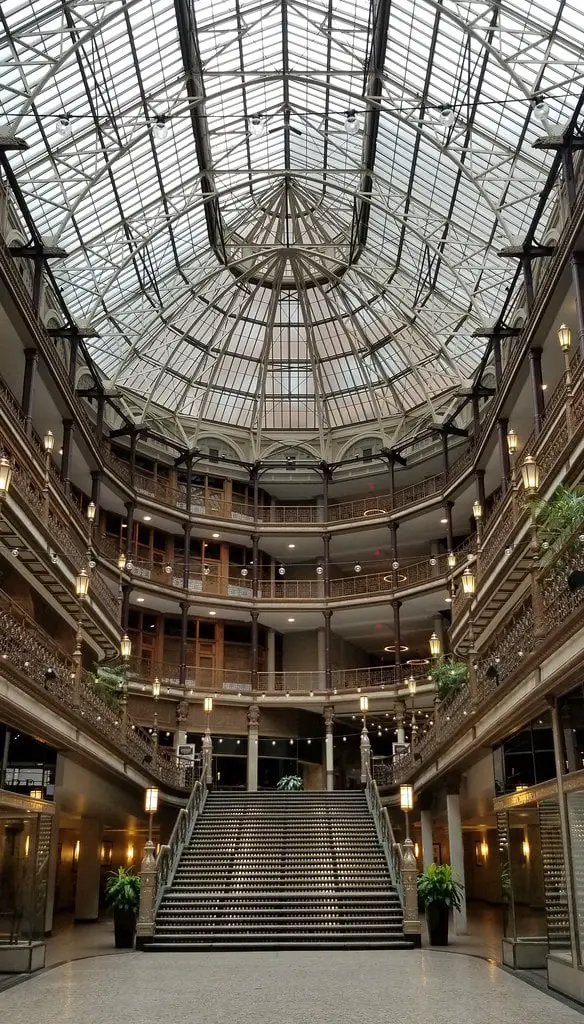
A Vision for the Future
The future looks bright for The Arcade in Cleveland, Ohio, thanks to the vision laid out by Skyline Investments Inc. and Colliers International.
They plan to energize the spaces within The Arcade, creating a cohesive hub of artisanal activities. The goal is to draw in Cleveland's next generation of shoppers and diners while maintaining its historic qualities and individuality.
Renovations are in the pipeline to foster continuity between each space, making it more inviting and functional. The idea is to create a seamless experience for visitors, encouraging them to explore every nook and cranny.
This is not about erasing history; it's about enhancing it, making The Arcade a destination that people will want to return to time and time again.
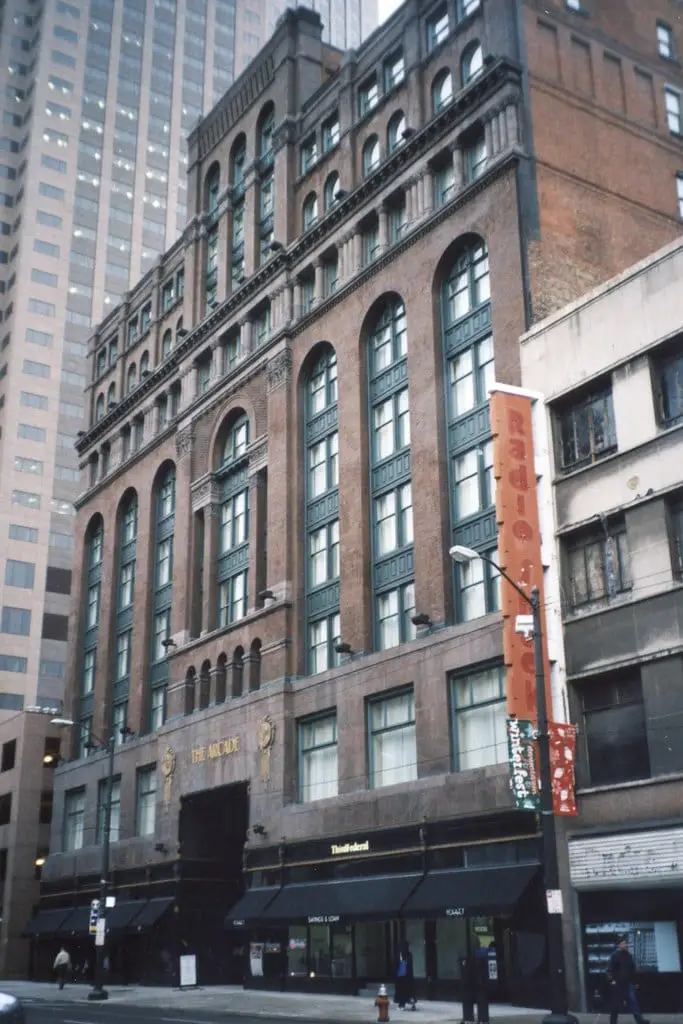
In the News
Recent news articles have highlighted The Arcade's resilience and adaptability. The media coverage has mainly been positive, from features on its architectural marvel to updates on new tenants. The structure remains relevant by adapting to modern needs, all while preserving its historical essence.
The Arcade has also been the subject of several documentaries and academic studies, further cementing its status as an iconic landmark. It's not just a relic of the past; it's a vibrant part of Cleveland's present and future.
The Cultural Impact
The Arcade in Cleveland has always been more than a building; it's a cultural icon that has shaped the social fabric of Cleveland. Its impact is far-reaching, from hosting events to being the backdrop for countless photographs. Interviews with locals demonstrate a deep pride and affection for this historic landmark.
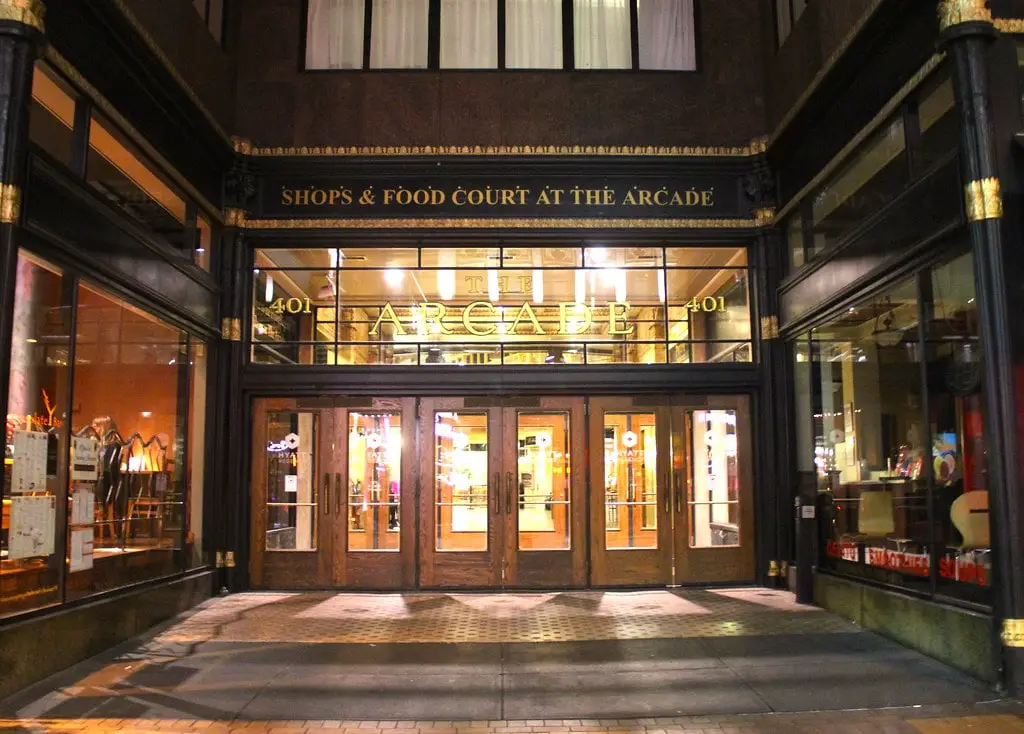
It's not just about the architecture or the shops; it's about the memories created within these walls. For many Cleveland residents, The Arcade had been the setting for marriage proposals, the beginning of friendships, and the celebration of significant milestones. It served as a fundamental element of community life, resonating with individuals across different ages.
Conclusion
The Arcade is a testament to history and tradition's enduring power in a world obsessed with the new and the now. It's a place that captures the imagination and invites exploration, a space that feels both intimate and grand.
As Cleveland looks to the future, The Arcade remains a vital part of its past, a beloved landmark that continues to capture hearts and minds.

